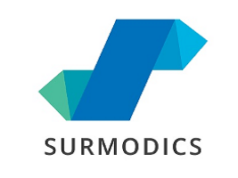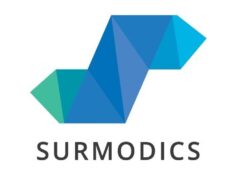
In the TRANSCEND clinical trial, the SurVeil drug-coated balloon (DCB; Surmodics) demonstrated “excellent efficacy and safety” out to 24-month follow-up. This is according to Kenneth Rosenfield (Massachusetts General Hospital, Boston, USA), who presented the new data at Vascular Interventional Advances (VIVA) 2022 (31 October–3 November, Las Vegas, USA).
The TRANSCEND trial randomised 446 patients at 65 global sites to assess the safety and efficacy of the SurVeil DCB versus the IN.PACT Admiral DCB (Medtronic) for treatment of superficial femoral and proximal popliteal artery lesions. TRANSCEND 12-month data, presented in January 2021, showed the SurVeil met its primary safety and efficacy endpoints and was non-inferior to the IN.PACT Admiral DCB while utilising a lower dose of the anti-proliferative drug paclitaxel. Patients in the TRANSCEND trial will be followed for 60 months.
Rosenfield, who is the principal investigator of TRANSCEND, outlined 24-month data at VIVA 2022 that demonstrated comparable, sustained clinical outcomes between the SurVeil DCB and IN.PACT Admiral DCB cohorts. Functional outcomes for treated patients also demonstrated continuous improvement at the two-year point.
“These 24-month trial results validate the benefits that patients are experiencing after receiving treatment with the SurVeil DCB, and I am pleased to see that the SurVeil DCB continues to demonstrate excellent efficacy and safety in this pivotal RCT, [randomised controlled trial],” said Rosenfield. “I am excited about the potential of this next-generation DCB, which offers an attractive low dose therapeutic alternative to improve outcomes in our PAD patients.”
At 24 months, 81.8% of patients treated with SurVeil met the secondary safety endpoint, a composite of freedom from device- and procedure-related death through 30 days post-index procedure and freedom from major target limb amputation (above the ankle) and clinically driven target vessel revascularisation (CD-TVR) vs. 83.2% of patients treated with the IN.PACT Admiral DCB. Fewer than 15% of patients in both arms of the trial required repeat revascularisation procedures. One patient in the IN.PACT group required major leg amputation.
The TRANSCEND trial’s two-year data showed a primary patency rate of 70.8% for SurVeil DCB patients vs. 70.4% for IN.PACT Admiral. Both the SurVeil and IN.PACT Admiral DCBs utilise paclitaxel drug coatings. However, Surmodics notes in a press release announcing the results that the IN.PACT Admiral DCB has a 75% higher drug load of paclitaxel (3.5µg/mm²) than the SurVeil device, which has a 2.0 µg/mm² drug load.












